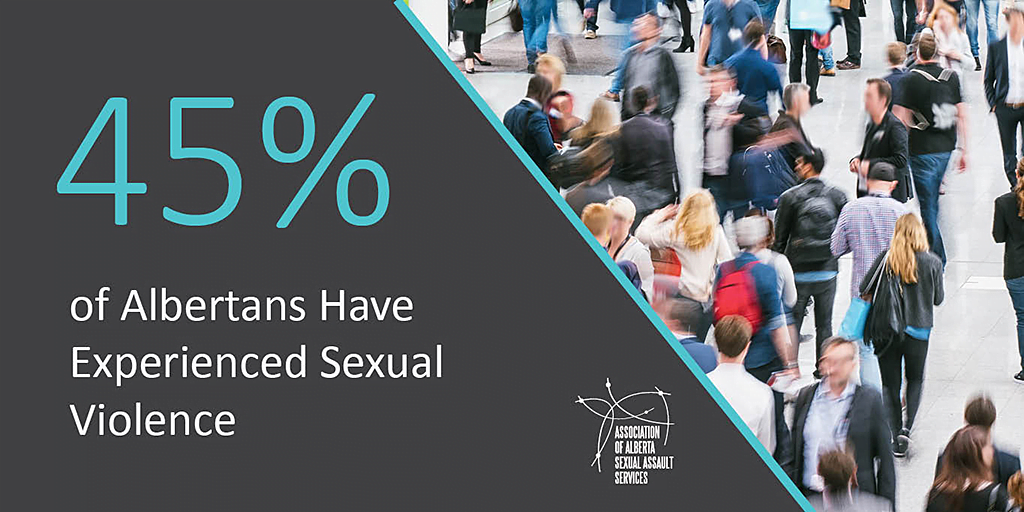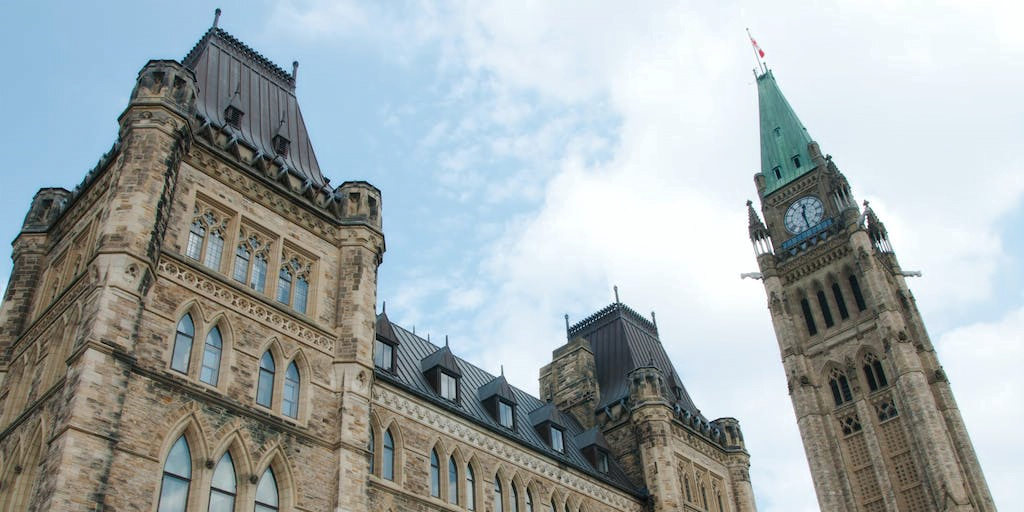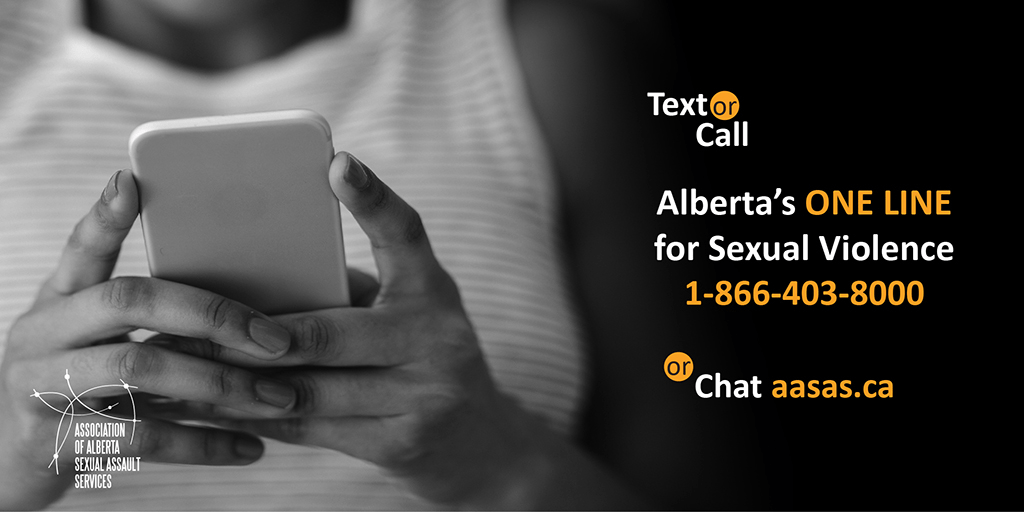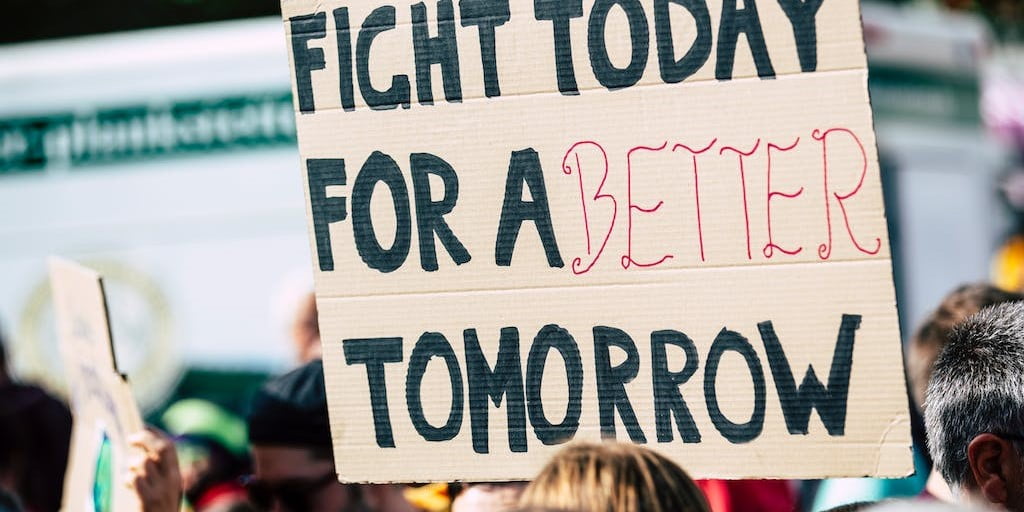Sexual violence includes child sexual abuse, sexual assault and sexual harassment. Itís more prevalent than you might think, but we can prevent further harm by working together. What is sexual violence? Sexual violence is a broad term that includes...
Sexual violence includes child sexual abuse, sexual assault and sexual harassment. Itís more prevalent than you might think, but we can prevent further harm by working together.
 Photo provided by the Association of Alberta Sexual Assault Services.
Photo provided by the Association of Alberta Sexual Assault Services.
What is sexual violence?
Sexual violence is a broad term that includes child sexual abuse, sexual assault and sexual harassment. A common thread throughout all aspects of sexual violence is that it consists of verbal and physical acts of a sexual nature that occur without the consent of at least one person.
Where does it come from?
This type of harm, and other forms of violence, stem from attitudes and beliefs about self and others that progress to verbal and physical actions. Anyone can choose to harm someone with these types of actions, and anyone can be harmed by people willing to use sexually violent behaviour.
How prevalent is it?
To get a clear picture of the prevalence of sexual violence in Alberta, the Association of Alberta Sexual Assault Services (AASAS) undertook a study to gauge how many Albertans have been harmed by those who are willing to use sexual violence. AASAS released its Key Findings report in 2020.
What AASAS and their research partners found confirmed what we know: sexual violence is prevalent. In fact, 45% of adult Albertans have experienced some type of sexual abuse in their lifetime. Thatís close to half of the adults in the province.
As well, 34% of Albertans were sexually abused while they were under the age of 18, and 28% of adult Albertans were sexually assaulted.
These numbers are shocking. And because of the difficulty in talking about sexual violence Ė the shame, stigma and misconceptions Ė the prevalence could be even higher.
How do we prevent it?
We can end sexual violence Ė together.
While we know that no one decides to sexually assault or abuse someone unexpectedly over their morning coffee, we do know they can hold onto attitudes and beliefs about others, and themselves, that makes it easier for them to cause harm. These ways of thinking can start early. If they are not challenged along the way, these thoughts can progress to harmful jokes and statements and all the way to physical harm.
While we canít see into peopleís thoughts, we can step in when we hear or see something that causes harm when it is safe for us to do so. Not laughing at the sexist or ableist joke around the water cooler can be a step toward ending harm.
Having open, honest and factual conversations with the children in our lives (in an age and developmentally appropriate way) is also sexual violence prevention. When children know they have trusted adults in their lives that they can talk to about anything, and when they know they can refuse a hug or kiss or even a high five, children can feel empowered to use their voice whenever they need to. When they know the names of their private parts, and the difference between whatís okay and not okay, they have the language and tools to speak out.
Making it more acceptable to talk about healthy sexuality and relationships as well as sexual violence can also be preventative. This open dialogue allows for accurate information, support and healing to occur. When we take the issue out of the shadows and bring it into the light, the secret is no longer protected. Those who cause harm by using sexual violence can be held accountable sooner and more easily.
Sometimes we use risk prevention tips and tricks like watching our drinks and holding our keys between our fingers. These can help us feel safe but they are targeting the wrong group of folks to be considered prevention. Asking those who are at risk of being harmed to hold responsibility for avoiding harm can create feelings of guilt and is a cause of victim blaming. Instead, use language that puts accountability on the individual who chose to harm others.
The only true prevention lies with making sure no one is willing to use sexually violent behaviours.
Tools from AASAS
Learn more about things you can do every day and ending sexual violence.
Register for First Responder to Sexual Assault and Abuse Training. This two-day workshop goes more in-depth about where sexual violence comes from, how to respond to people who tell you it happened to them, and how we can work together to help end it.
Help is available
If you or someone you know would like more information or support, please contact Albertaís ONE LINE for Sexual Violence. You can call or text 1-866-403-8000 or access chat via aasas.ca to connect with highly-trained staff and volunteers. The ONE LINE team can answer your questions and support you in crisis and throughout your healing journey.
Looking for more information?
Sexual Violence: Itís prevalent and preventableDecember 20, 2023 Responding to Disclosures of Sexual Violence: How to respond positively and with compassionNovember 14, 2023 Beyond ĎHigh Conflictí: The need for domestic violence awareness and assessment in family law interventionsNovember 9, 2023Looking for articles like this one to be delivered right to your inbox? SUBSCRIBE NOW!
DISCLAIMER The information in this article was correct at time of publishing. The law may have changed since then. The views expressed in this article are those of the author and do not necessarily reflect the views of LawNow or the Centre for Public Legal Education Alberta.
The post Sexual Violence: Itís prevalent and preventable appeared first on LawNow Magazine.












